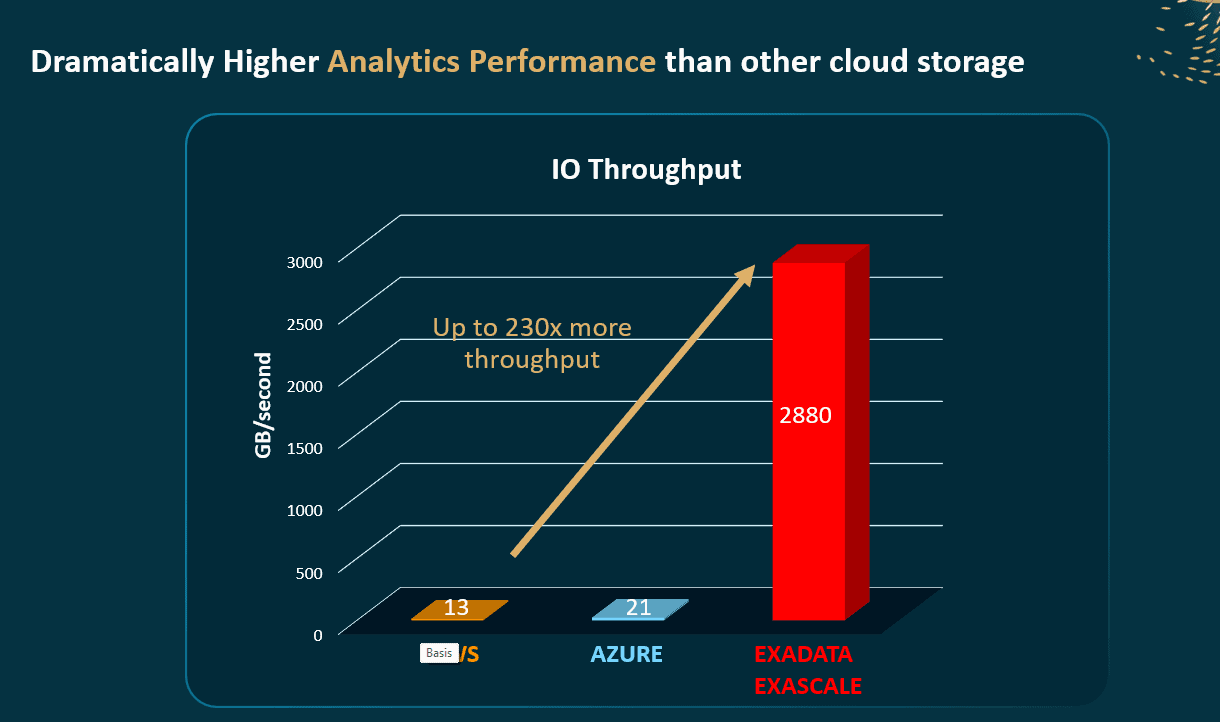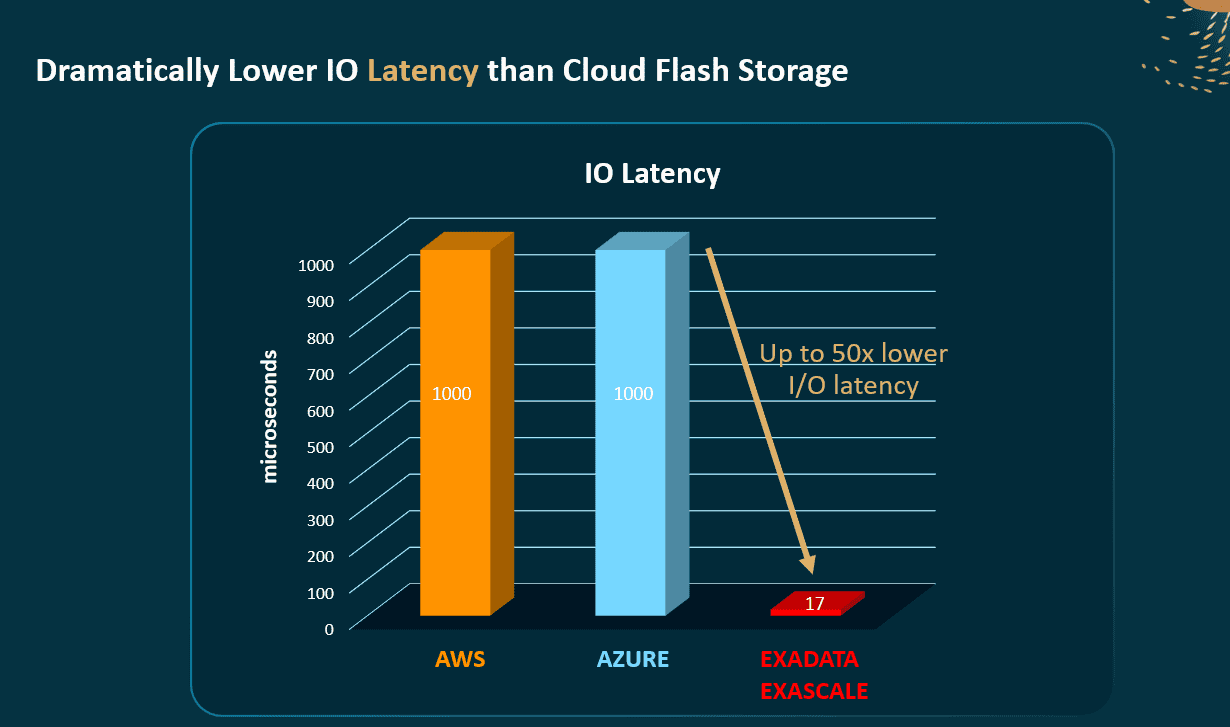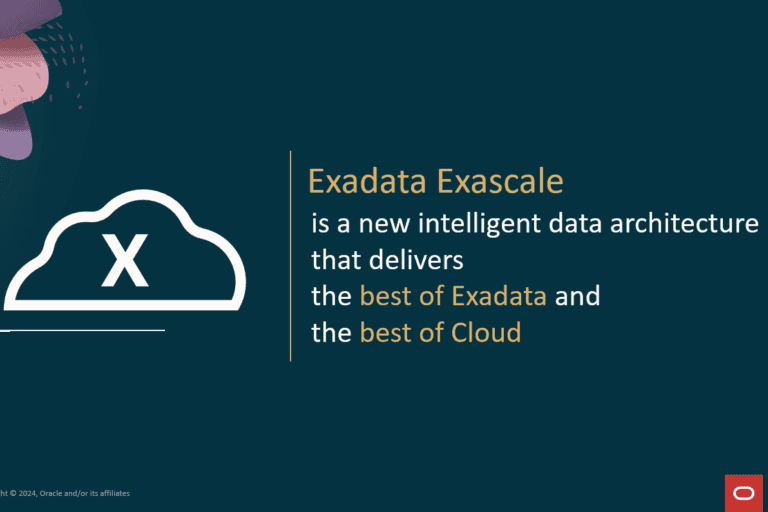Oracle Exadata is known for its high performance and applications for critical workloads. However, the cost was also hefty, making it available only to a fairly select group of organizations. That will now change with Exadata Exascale, we hear from Oracle.
Today Oracle is announcing a fundamental change in how it markets Exadata. We have written regularly in the past about innovations in this part of the portfolio. However, that was often about a new generation of the chip that was in Exadata systems, or an update to the Oracle Exadata Cloud Infrastructure. Exadata Exascale is of an entirely different order. We hear that during a briefing by Kodi Umamageswaran, SVP Exadata & Scale-Out Technologies at Oracle. He calls this a “revolutionary change in how we [Oracle, ed.] do Exadata.” That is not an exaggeration as far as we are concerned. Below we go into why Exascale could be a big deal.
Exadata Exascale combines Exadata and cloud
Basically, Exascale is a completely new data architecture for Exadata environments. In doing so, Oracle approaches this environment in a different way than was previously the case. Namely, it adds characteristics of the cloud model to what makes Exadata interesting for organization. That is, Oracle wants to use Exadata Exascale to link the key features of the cloud to the key features of Exadata.
Exadata is known for its (extremely) high performance, thanks in part to hardware-based RDMA and the ability to intelligently clone databases running in Exadata. In addition, there is a lot of advanced intelligence in Exadata, which makes it possible to offload certain queries that need to analyze a lot of data to a storage cloud. It is also possible within Exadata to maximize data performance in conjunction with the queries by making it available in-memory, in relational columns. Furthermore, there is also the necessary AI in Exadata, including the ability to offload vector searches to speed them up.
Exascale makes Exadata much more flexible
So the above features were already available within Exadata. Today’s news is mainly that Oracle now links this to the payment model, multitenancy and scalability of the public cloud. In Oracle’s case, that’s obviously OCI. In particular, multitenancy for Exadata is an important step. Before that, ASM (Automatic Storage Management) was always available. That took care of distributing the storage needs among the different tenants (databases). In other words, previously each tenant had its own Exadata compute and storage servers. So that is no longer necessary with Exadata Exascale.
With Exadata Exascale, a shared pool of compute and storage is available. Users need only specify the number of cores and amount of storage they need. According to Oracle, it is possible to make use of this shared pool from as little as a few cores. Exascale acts as a control plane that spreads a database across dozens of pooled storage servers, so to speak. Conversely, thousands of cores are available for each query that users fire. It is good to point out here that Exascale requires customers to run version 23ai of the Oracle database.
Also read: Oracle Database 23ai brings data and AI together
Exascale’s storage component is also not hampered by the multiple tiers generally used in cloud storage. There, you often have a load balancing tier, a tier where LUNs are made visible to VMs and then another metadata tier. Oracle promises a direct link between the Exascale Compute Cloud and Exascale Storage Cloud, via a 100G RoCE connection. This makes things like SQL offloading a whole lot easier and, more importantly, faster. Above, we mentioned that Oracle uses RDMA technology, so it adds virtually no latency there either. Add to that the fact that the Exascale Storage Cloud optimizes storage and can move data from disks, through flash to in-memory (XRMEM) and it’s clear that we’re dealing with lightning-fast storage here.
Below are two slides Oracle shared with us during the briefing we attended. They are about IO Latency and IO Throughput.


Exascale makes Exadata much more accessible
We have now seen how Oracle has technically coupled Exadata with a cloud model and what the performance of such an allegedly unique architecture is. However, that is only one side of the coin called Exadata Exascale. The idea is that it also makes Exadata available to a wider audience. Linking the advantages of Exadata to those of the cloud makes such a step possible.
Thanks to the Exascale control plane we also mentioned above, users do not have to worry about database management. Oracle provides Exascale as a service and thus takes care of that. As a customer of this service, you no longer see physical servers in your dashboard, just the databases and VM clusters. Exascale also takes care of managing the storage on which the databases are distributed. Among other things, this allows customers to pay only for the storage they need for their databases. They do not have to pay for IOPS, something that is quite common in other cloud storage environments. That tends to be very expensive, especially if there are so-called runaway queries. Those can cause a nasty surprise on the monthly bill. You won’t have those surprises with Exadata Exascale, Oracle promises.
When it comes to costs, Oracle also gives us a calculation example of a monthly bill for Exadata Database Service (the “old” environment) compared with Exadata Database Service with Exascale. Here, the company claims to achieve more than 95 percent savings. From a monthly fee of $10,800 to just $357. Or $1.77 per hour instead of $15.81 per hour. We do not have a good understanding of all the prerequisites for this calculation, so cannot guarantee that this is achievable by everyone. However, Exadata Exascale will undoubtedly be more economical than Exadata Database Service without Exascale.
Oracle’s promise: a lot for a little
At the end of the briefing on Oracle Exadata Exascale, Umamageswaran again briefly summarizes what Oracle wants to achieve with this new service: “We want to make extreme performance at a very low price possible for everyone.” If all the promises, benchmarks and calculations we’ve seen are true, it has succeeded well. Oracle apparently thinks that beyond the traditional Exadata customers, there is also demand further down the market for this type of environment. That’s not crazy thinking at all as far as we’re concerned. Needs always move from top to bottom in this market (especially now with AI). There’s no reason to assume it will be any different for Exadata performance. With the introduction of Exadata Exascale, this performance becomes available for small workloads and small organizations. That’s quite an achievement and certainly enough reason to call this a big change for Exadata.
